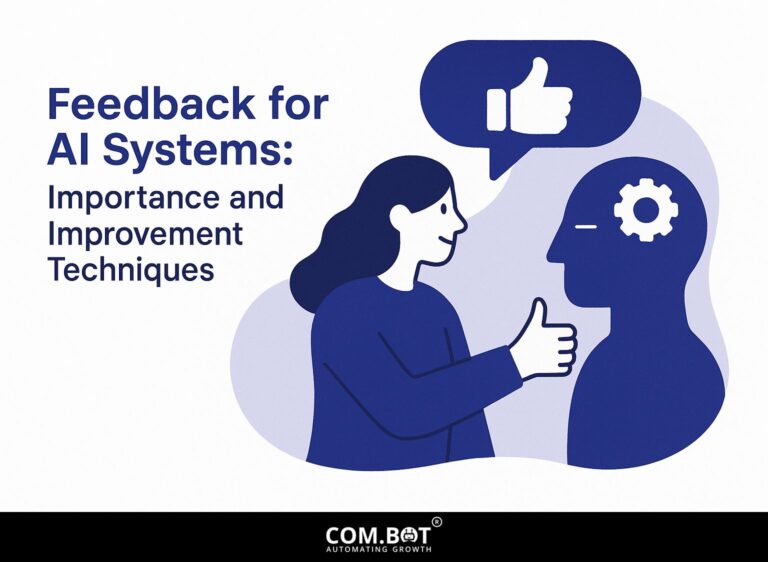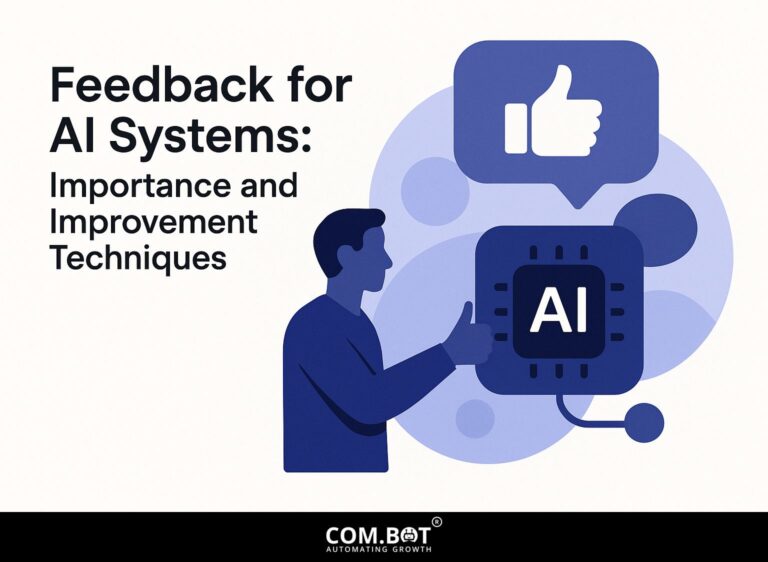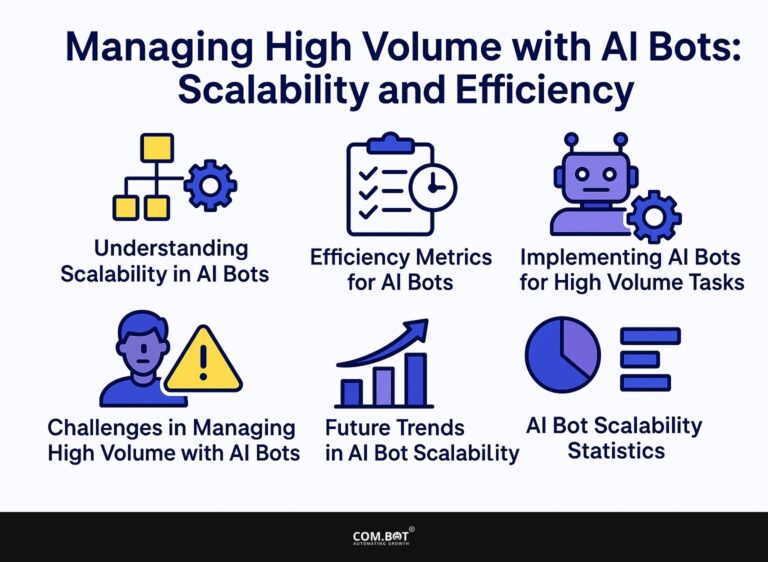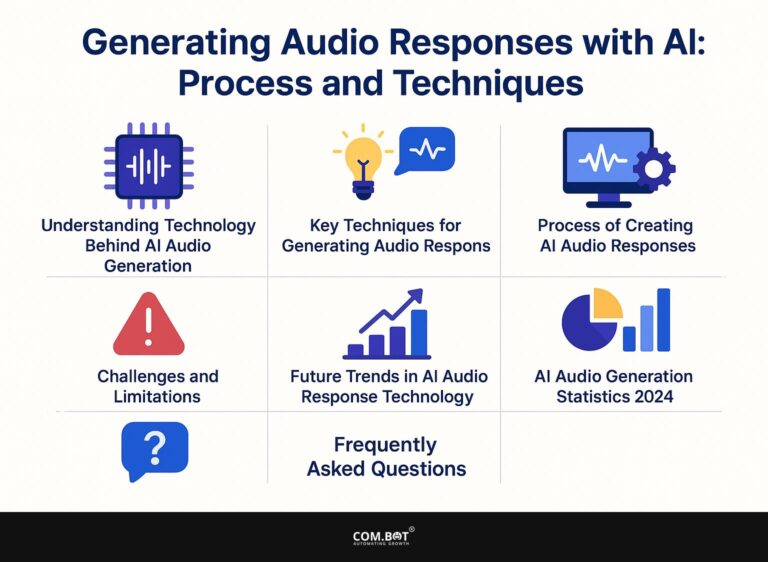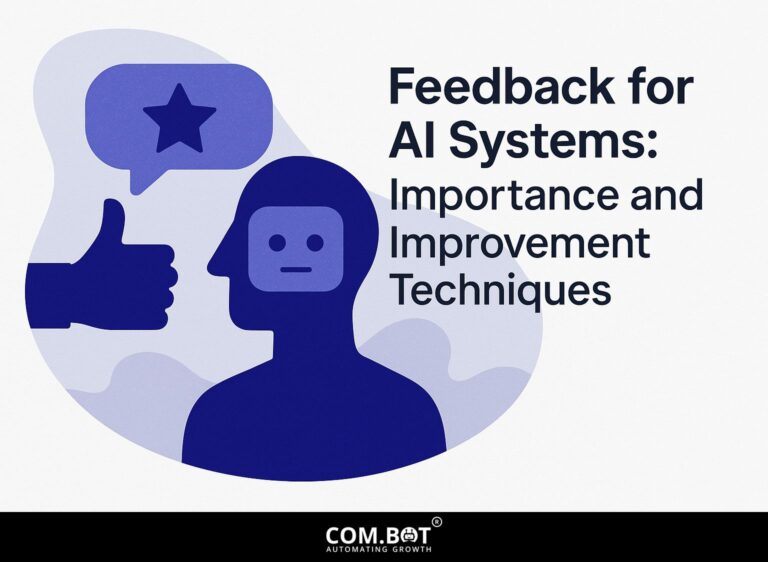Feedback for AI Systems: Importance and Improvement Techniques
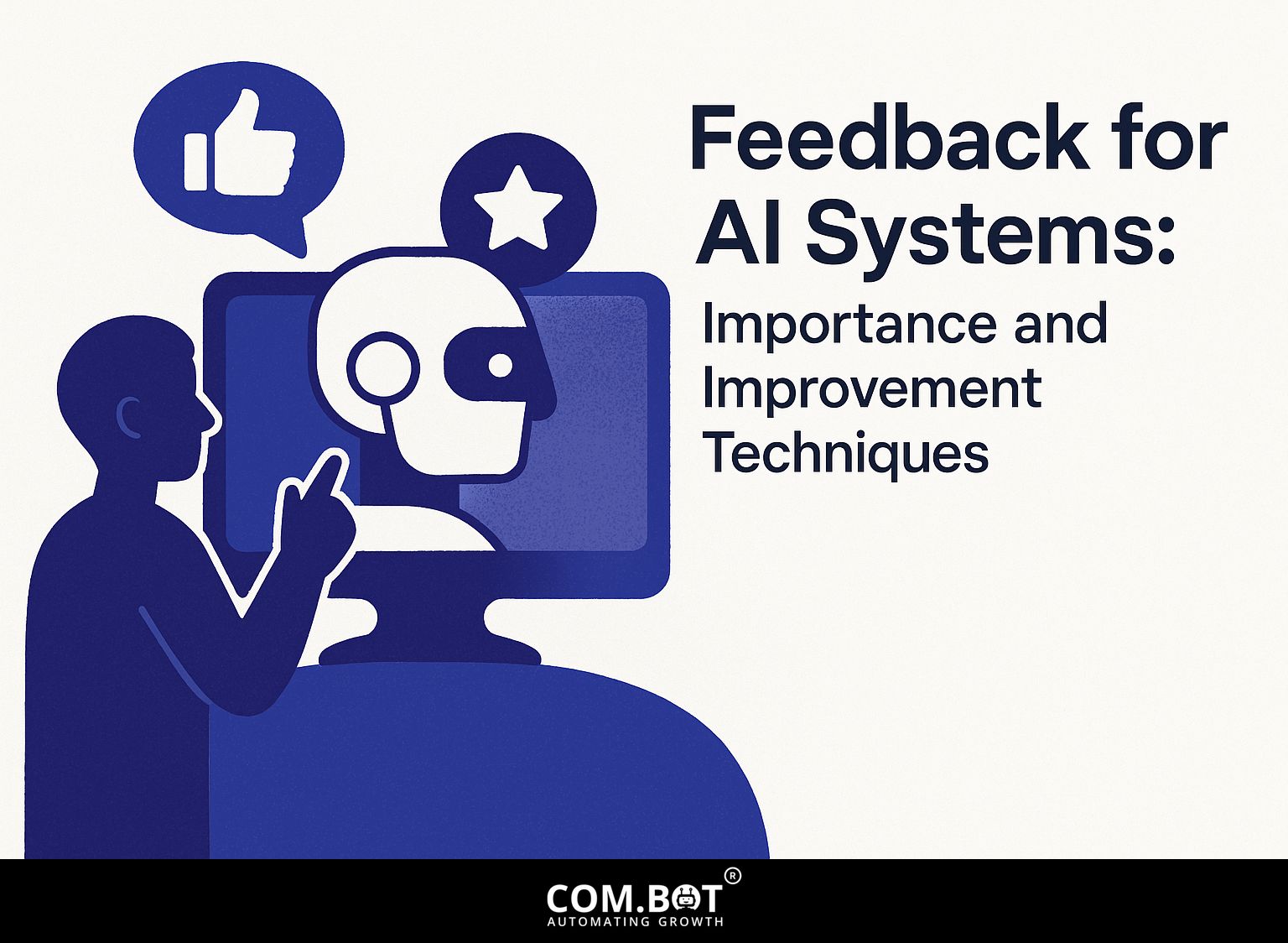
In the rapidly changing field of Artificial Intelligence, using feedback loops is essential for improving performance. Effective feedback methods, like supervised feedback, support ongoing learning, allowing AI systems to improve and increase their accuracy. This article discusses why feedback matters in AI development. It suggests useful methods to improve your systems, focusing on building user confidence and contentment. Learn how using strategic feedback can change your AI projects.
Key Takeaways:
- 1 Importance of Feedback for AI Systems
- 2 Types of Feedback Mechanisms
- 3 AI Feedback Mechanisms Data
- 3.1 AI Feedback Loop: How Customer Feedback Affects Outcomes
- 3.2 AI Feedback Loop: Enhancing Feedback Systems Knowing how feedback loops operate is important for making them work better. By examining how these loops perform, we can find areas that need improvement and make more effective systems. This method uses clear data and practical techniques to adjust the feedback process, leading to smoother operations and improved results.
- 3.3 AI Feedback Loop Details: Handling Feedback Data
- 3.4 Explicit vs. Implicit Feedback
- 3.5 Real-time vs. Batch Feedback
- 4 Techniques for Collecting Feedback
- 5 Analyzing Feedback Data
- 6 Implementing Feedback for Improvement
- 7 Challenges in Feedback Implementation
- 8 Future Directions in AI Feedback
- 9 Frequently Asked Questions
- 9.1 What is the importance of feedback for AI systems?
- 9.2 How can feedback improve the accuracy of AI systems?
- 9.3 What are some techniques that can be used to improve feedback for AI systems?
- 9.4 Why is it important to regularly review and analyze feedback for AI systems?
- 9.5 How can feedback for AI systems lead to ethical concerns?
- 9.6 Is it possible to create a system that automatically gives feedback to AI?
Definition of Feedback in AI
In AI, feedback is the data from user interactions used to make system changes and improve learning.
There are two primary types of feedback: direct user feedback and system-generated feedback.
Direct user feedback involves ratings, comments, or survey answers that improve recommendations, such as when someone marks a movie as ‘liked’ on Netflix. In contrast, system-generated feedback derives from user behavior, such as click-through rates or time spent on specific items.
E-commerce sites look at past purchases to recommend products, adjusting their processes with data analysis to improve user involvement and increase sales. For a deeper understanding of how feedback improves these systems, check out our detailed exploration on AI feedback improvement techniques.
Role of Feedback in AI Development
Feedback is important in AI development because it improves algorithms and increases how reliable and accurate systems are in their predictions.
Incorporating feedback into machine learning involves assessing model performance through metrics like accuracy and recall. For example, with TensorFlow, developers can teach models using current data and keep adding new data to improve their learning process.
Scikit-learn provides tools for cross-validation, allowing for better parameter tuning by assessing various versions of a model. By repeating the steps of training, testing, and refining, algorithms gain the ability to manage new data, which gradually enhances the AI’s capability and efficiency. A deeper understanding of feedback improvement techniques can further optimize this process by highlighting the best practices in AI system development.
Importance of Feedback for AI Systems
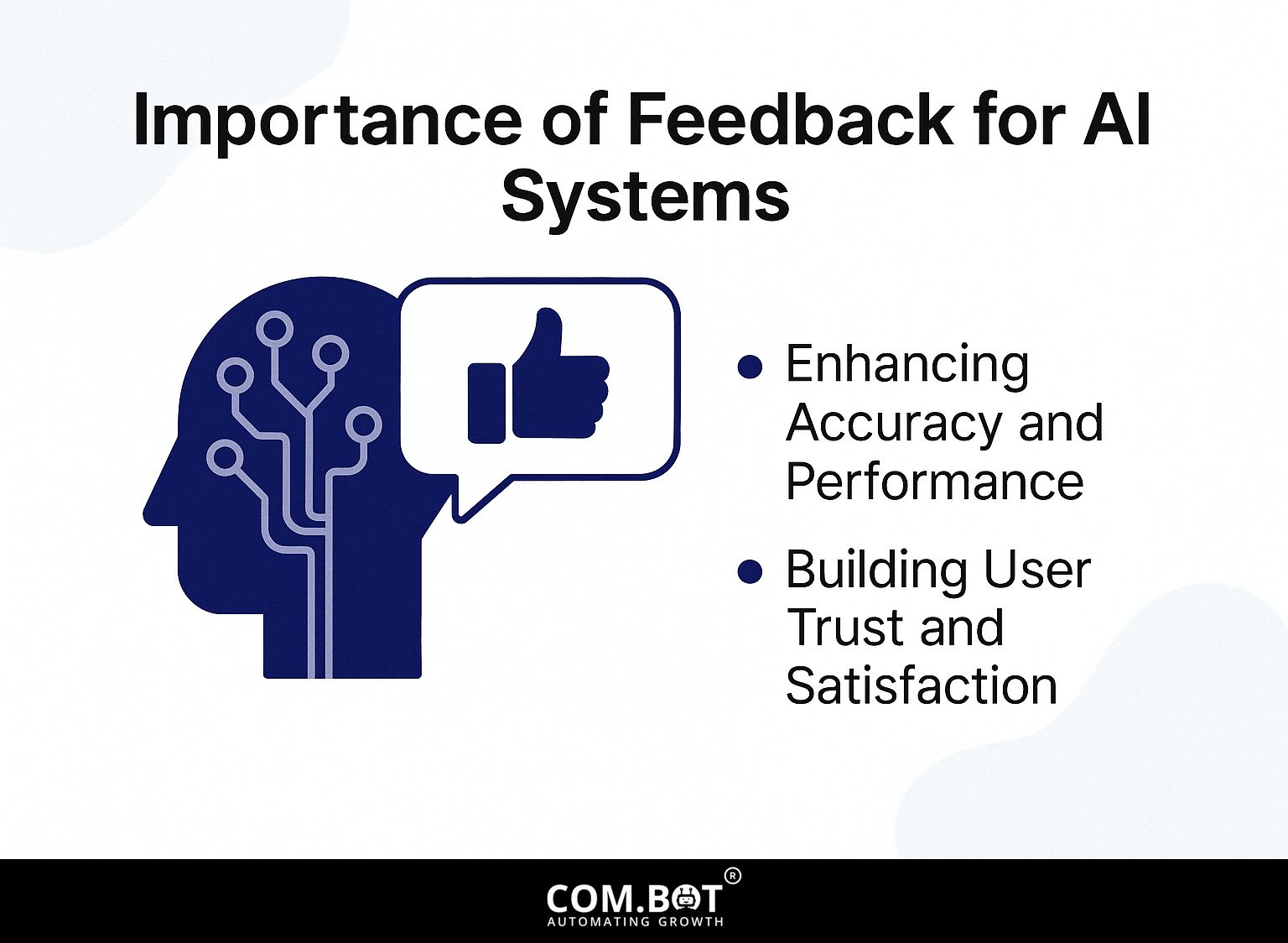
The success of AI systems relies on strong feedback methods, which improve accuracy and meet user needs, resulting in improved outcomes (our guide to feedback techniques for AI systems explores this in depth).
Enhancing Accuracy and Performance
Implementing structured feedback loops can increase prediction accuracy by up to 30% in systems like fraud detection and recommendation engines.
User actions on Netflix help improve movie recommendations.
For example, when someone rates a movie, this information is used to change the types of genres or styles suggested next time.
Real-time data processing helps to constantly get better and keep up with changing viewer tastes.
By using machine learning algorithms that include this feedback, companies can improve user satisfaction and make content delivery better, demonstrating how much feedback loops affect performance and accuracy in predictive systems.
Building User Trust and Satisfaction
Effective feedback systems earn users’ trust by being clear and responding to user actions quickly and carefully.
For example, chatbots like Drift and Intercom ask users for feedback, which helps them improve their answers over time.
By using clear feedback methods-like rating systems or follow-up surveys-these platforms create a sense of responsibility. Users feel valued when their input influences chatbot updates, thereby enhancing satisfaction.
Ensuring that data is used responsibly and kept anonymous is important. This helps build trust and encourages more people to use the technology.
Types of Feedback Mechanisms
Various feedback systems have specific functions in AI, ranging from supervised learning techniques to real-time systems that change based on user actions. For those interested in enhancing these AI mechanisms, our detailed discussion on feedback for AI systems offers valuable insights and improvement techniques.
AI Feedback Mechanisms Data
AI Feedback Mechanisms Data
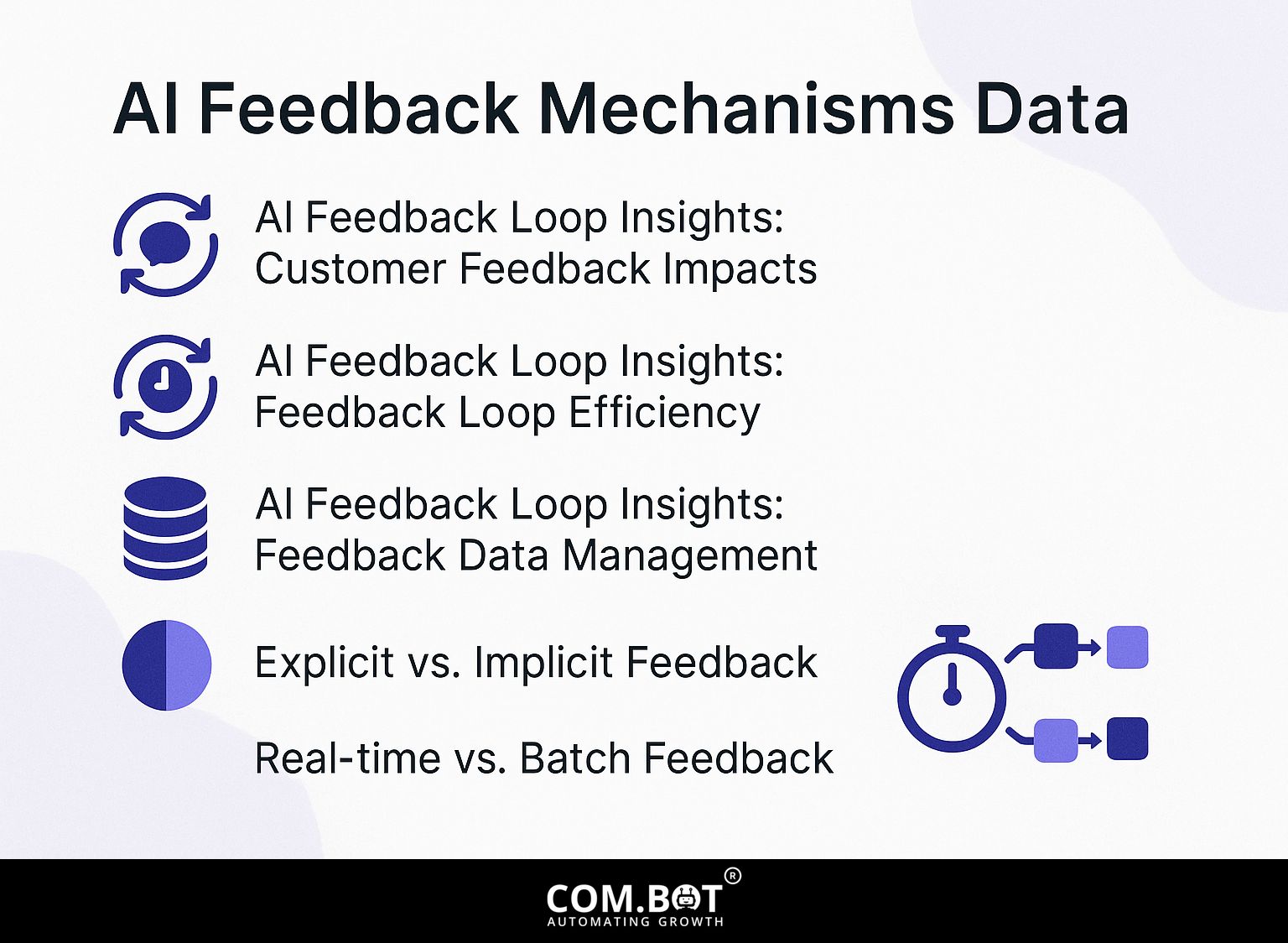
AI Feedback Loop: How Customer Feedback Affects Outcomes
AI Feedback Loop: Enhancing Feedback Systems Knowing how feedback loops operate is important for making them work better. By examining how these loops perform, we can find areas that need improvement and make more effective systems. This method uses clear data and practical techniques to adjust the feedback process, leading to smoother operations and improved results.
AI Feedback Loop Details: Handling Feedback Data
The AI Feedback Mechanisms Data gives a thorough look at how AI feedback loops improve business processes and customer communication. This data shows how important AI feedback systems are in today’s businesses, focusing on better customer satisfaction, more accurate models, and smoother operations.
AI Feedback Loop Insights indicate that 75% of businesses are using AI feedback, showing how it is widely used to gather and apply customer feedback. This utilization leads to a 54% increase in customer satisfaction, showing how AI can accurately grasp and satisfy what customers want.
- Feedback Loop Efficiency: AI feedback mechanisms contribute to a 20% improvement in model precision. When businesses use customer feedback in AI models, they can make more accurate predictions and achieve better outcomes, leading to more reliable AI applications. Furthermore, there’s a 33% increase in operational efficiency, emphasizing the role of AI in streamlining processes and reducing resource wastage.
In terms of Feedback Data Management, the adoption of AI feedback loops results in a 15-unit reduction in response time, enhancing customer experience by providing quicker resolutions and interactions. Additionally, there’s a 30% increase in data collection through feedback “”, which helps businesses collect more detailed information for ongoing improvement.
The AI Feedback Mechanisms Data Highlights how AI feedback loops significantly change business strategies. By using AI to improve how they deal with customers and how they run their operations, businesses can be more accurate, work better, make customers happier, and grow while staying ahead of competitors.
Explicit vs. Implicit Feedback
Explicit feedback, like user ratings, is different from implicit feedback, which comes from user behavior. Both types are important for improving AI models.
Explicit feedback, like the star ratings on Amazon, provides direct input from users about their satisfaction with a product. For instance, a 4-star rating might suggest good quality but indicate room for improvement.
In contrast, implicit feedback, gathered from Spotify’s analysis of listening habits, reveals preferences without active input. For example, if a user frequently skips a specific genre, Spotify may adjust recommendations accordingly.
Knowing this kind of feedback allows platforms to adjust algorithms, improving user experience by providing content that matches personal tastes.
Real-time vs. Batch Feedback
Immediate feedback provides quick information, while batch feedback collects data over a period. Both are important for improving AI’s performance.
Real-time feedback systems used by social media platforms let companies quickly change things based on user actions. This helps increase user engagement. For instance, Twitter adjusts content recommendations instantly based on trending topics and user activity.
In contrast, batch feedback systems provide a broader view over time, aggregating data from various sources to inform strategy. Monthly reports from tools like Google Analytics provide data on shifts and overall performance patterns, aiding in making decisions.
Using both methods can lead to effective and planned changes in AI applications.
Techniques for Collecting Feedback
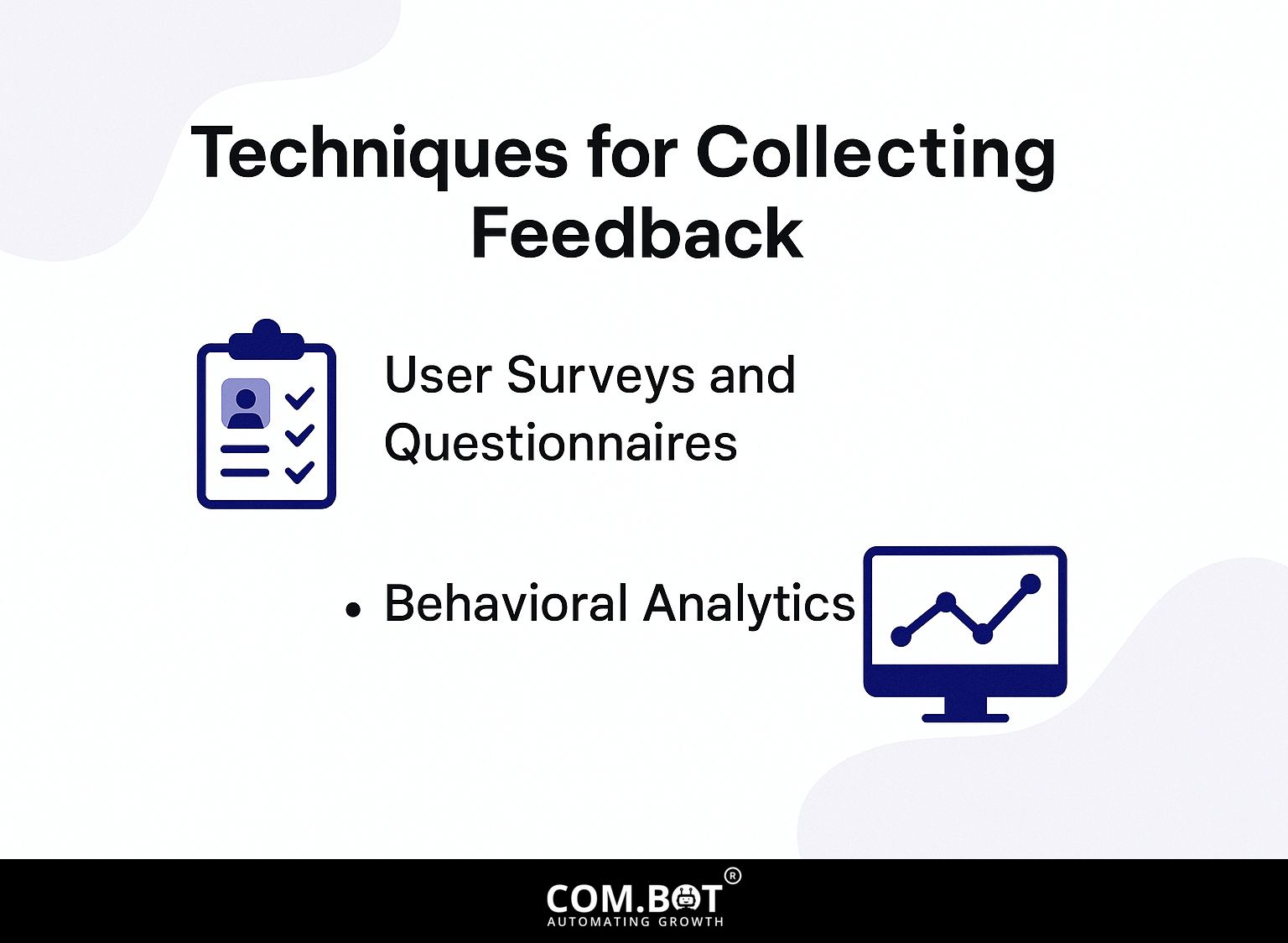
Gathering feedback is important for gaining useful information, through methods such as surveys and analyzing actions.
User Surveys and Questionnaires
User surveys can give helpful feedback, and platforms like SurveyMonkey have tools to make customized questionnaires to assess user satisfaction.
To make your survey work better, try to get at least 30% of people to finish it. Keep your survey concise and focused-ideally between 5-10 questions.
Think about giving incentives, like a 10% discount or a chance to win a prize, which can increase participation by up to 50%. Using simple, inviting language is important; for example, instead of asking, “How do you rate our service?” try “What did you like most about our service?” This encourages more meaningful answers and better interaction.
Behavioral Analytics
Behavioral analytics tools like Mixpanel track user interactions, providing critical data to inform feedback strategies and improve user experience.
To make the most of these tools, begin by keeping track of important measurements like how users interact, how long they stay, and how they move through the buying process.
By analyzing these metrics, you can identify patterns in user behavior, such as which features are most popular or where drop-offs occur. If you notice that many people are not finishing the signup process, try simplifying it or provide clear, step-by-step instructions.
Regularly going over these findings will lead to ongoing improvements, creating a feedback cycle that improves user satisfaction and keeps users coming back.
Analyzing Feedback Data
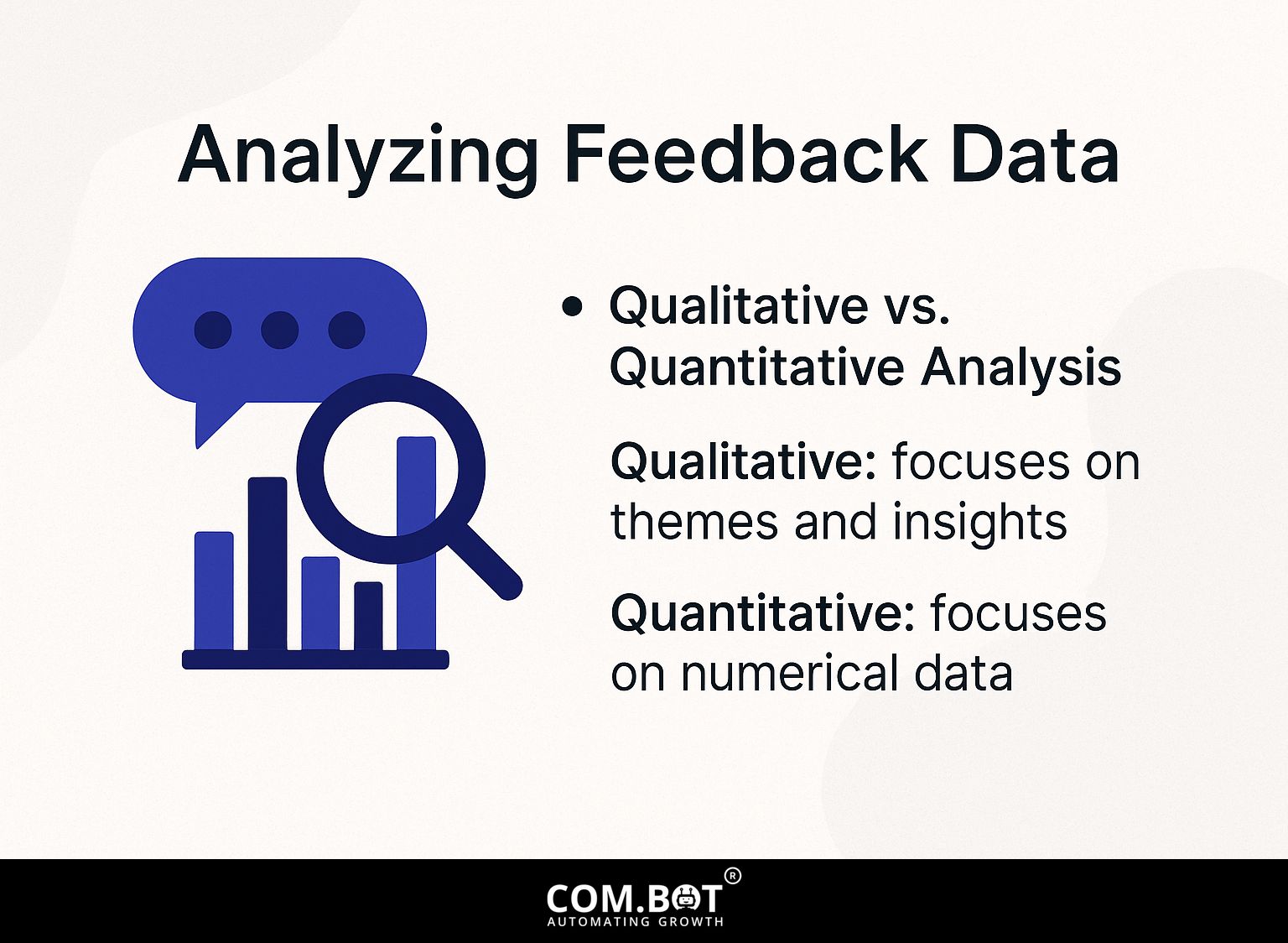
Feedback data analysis includes both detailed observations and numerical measurements, offering a full view of user experiences.
Qualitative vs. Quantitative Analysis
Qualitative analysis reflects user feelings, while quantitative analysis shows numbers, both needed for a complete view of feedback.
Methods such as interviews and focus groups allow you to deeply examine how users experience and feel about something. For example, holding organized interviews can reveal detailed feedback about how easy a product is to use.
On the other hand, quantitative methods include surveys and polls, offering measurable data that can identify overall trends. A Matrix-style survey, for instance, could assess satisfaction across multiple features, providing a clear overview.
By using these methods together, companies can learn more and make focused changes based on detailed feedback from users.
Implementing Feedback for Improvement
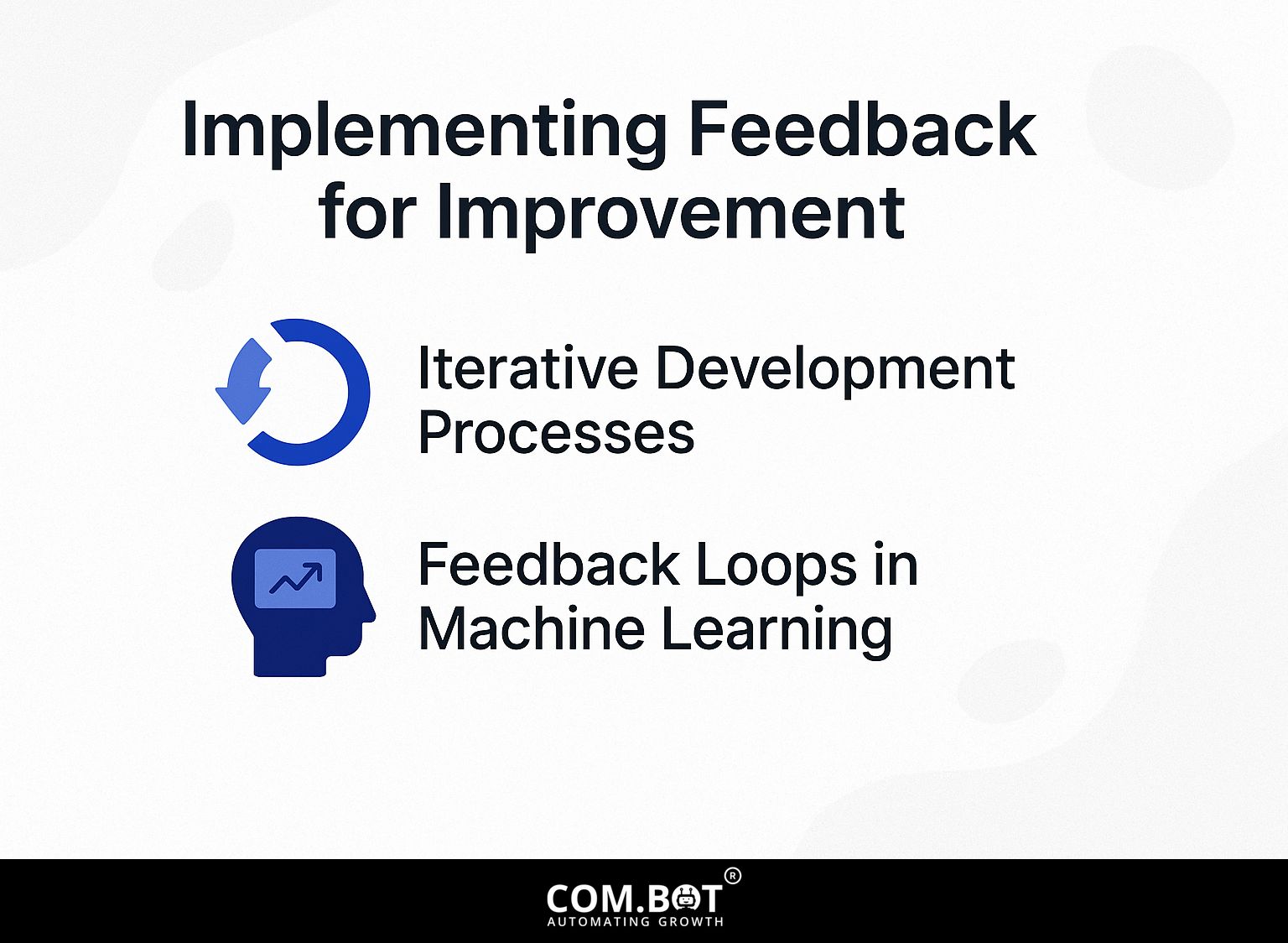
Using feedback well helps make step-by-step improvements, letting systems change based on what users say and how they perform.
Iterative Development Processes
Using repeated development steps lets AI systems constantly improve their products based on regular feedback and performance measurements.
To implement this, start with Agile methodology, which emphasizes short development cycles called sprints. Each sprint should last 1-4 weeks, culminating in a review meeting where the team assesses progress and pivots as necessary.
Tools like Trello can help manage tasks, allowing team members to track progress visually. For instance, create columns for ‘To Do,’ ‘In Progress,’ and ‘Done.’
Gather user feedback regularly to identify issues and use this information to enhance future updates, so your AI system gets better over time.
Feedback Loops in Machine Learning
Feedback loops in machine learning improve system performance by regularly adding user feedback into algorithm training cycles.
For instance, in reinforcement learning, an agent learns optimal actions by receiving feedback from its environment. Tools like MLflow can be very helpful here, letting developers monitor tests and see how adjusting parameters influences results.
When adjusting algorithms, always review performance data after changes to see how the system gets better. Over time, this process makes models better, increasing their usefulness in real-world situations.
Using user feedback can improve learning and make it fit better with what users want and like.
Challenges in Feedback Implementation
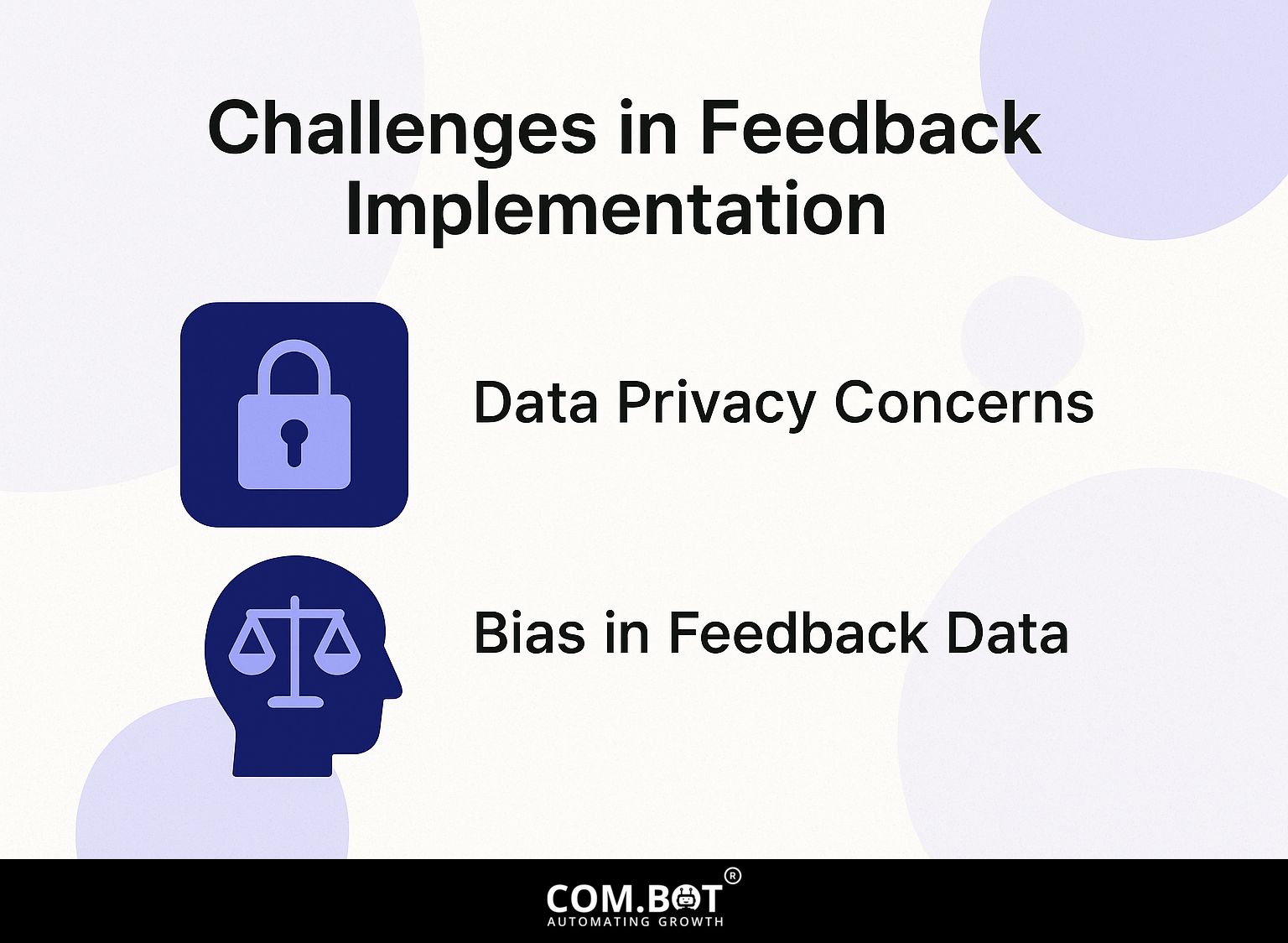
Using feedback systems in AI has many difficulties, such as privacy issues and biases that can affect results. One hidden gem in overcoming these challenges is exploring feedback improvement techniques that can significantly enhance AI system performance.
Data Privacy Concerns
Data privacy concerns are paramount when collecting feedback, necessitating adherence to regulations like GDPR and establishing user trust.
To protect data privacy, begin by getting clear permission from users before you collect any feedback. You can use tools like OneTrust to handle compliance and automatically manage consent processes.
Anonymization is important; make sure to remove any personal details from feedback data to keep user identities safe. Regularly audit your data collection methods and stay transparent about how feedback will be used.
Inform users about their rights under data privacy laws, reinforcing their trust in your processes.
Bias in Feedback Data
Bias in feedback data can create misleading results, highlighting the need for thorough data quality checks and different feedback sources.
To mitigate bias effectively, employ strategies such as actively soliciting feedback from varied demographic groups and utilizing anonymized surveys.
Tools like Fairness Indicators can help assess model performance across different segments, highlighting areas of potential bias.
Regular data audits using software like DataRobot or IBM Watson Studio can reveal discrepancies in response patterns. This method improves the quality of observations and encourages a broader view of user feedback, resulting in improved decisions.
Future Directions in AI Feedback
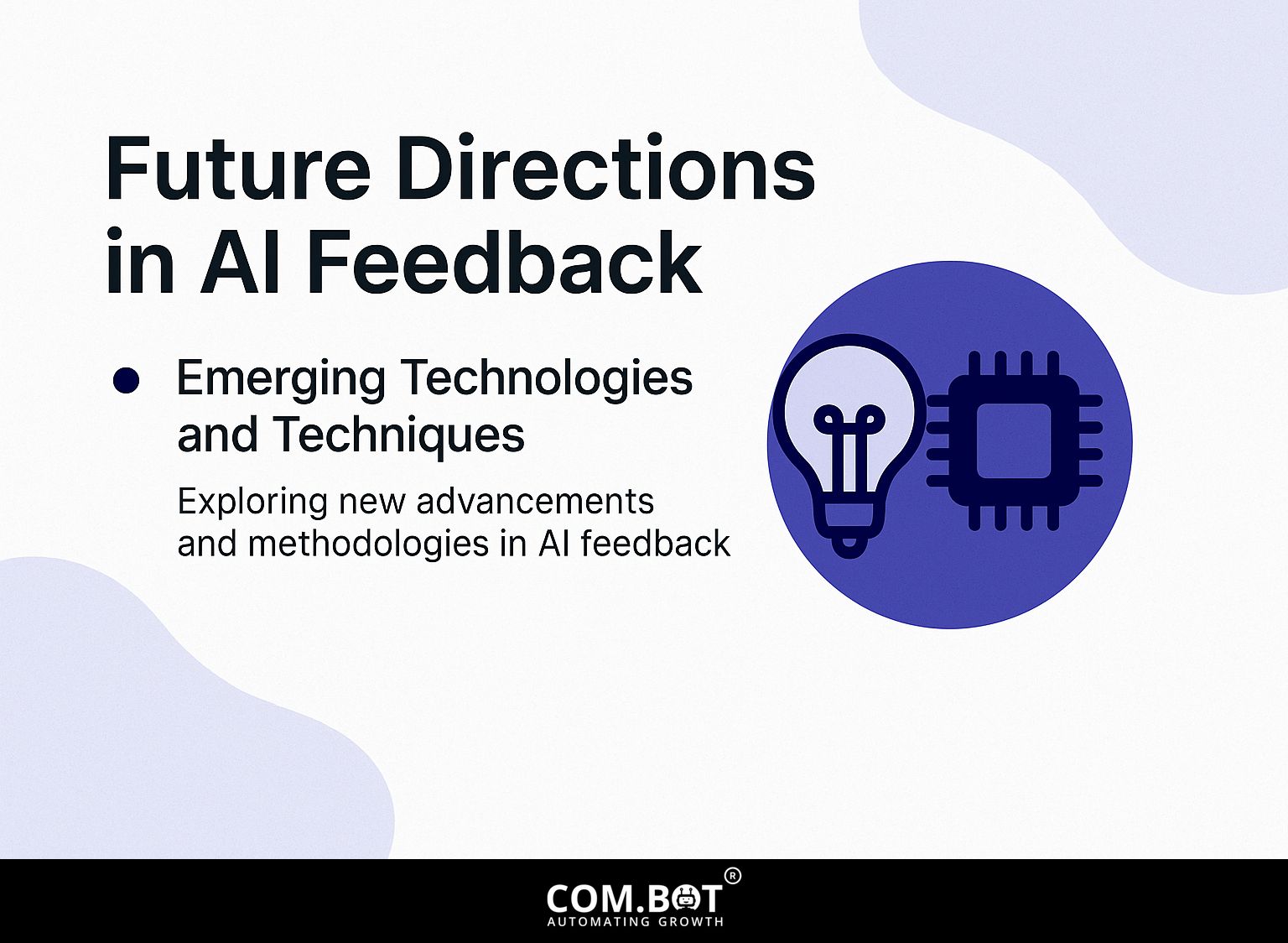
New technologies and inventive methods are changing how AI feedback works, improving how users interact and how systems respond.
Emerging Technologies and Techniques
New technologies like natural language processing and AI-based analytics are set to greatly change how we gather and examine feedback.
For example, companies such as Qualtrics use AI tools to analyze customer feelings from open-ended feedback, turning descriptive information into numbers.
Similar to Medallia, some tools use natural language processing to analyze feedback from different places-like social media, surveys, and customer discussions-to give a full view of customer experience.
These technologies improve how well businesses grasp customer feelings and allow them to react faster to new trends. Organizations that use these systems can make better decisions and keep their customers happier.
Frequently Asked Questions
What is the importance of feedback for AI systems?
Feedback is essential for making AI systems work better. The system learns from its mistakes and makes necessary adjustments, leading to more accurate and successful results.
How can feedback improve the accuracy of AI systems?
By getting feedback, AI systems can find patterns and trends in their data, helping them make better predictions and decisions. This leads to a higher level of accuracy in its outputs.
What are some techniques that can be used to improve feedback for AI systems?
One way is to use human feedback within the system to find and fix mistakes. Another technique is to keep training and updating the system with new data, helping it change and get better as time goes on.
Why is it important to regularly review and analyze feedback for AI systems?
Regular review and analysis of feedback helps to identify any shortcomings or biases in the system, allowing for necessary changes to be made. This makes sure the system keeps getting better and gives correct results.
How can feedback for AI systems lead to ethical concerns?
If the system is trained on biased data, it can lead to biased outputs and reinforce discrimination and inequalities. Therefore, it is important to carefully review and address any potential ethical concerns through the use of appropriate feedback techniques.
Is it possible to create a system that automatically gives feedback to AI?
Yes, there are methods and algorithms that can automatically handle receiving and reviewing feedback for AI systems. This can help make the system work better and keep it learning and getting better all the time. However, people might still need to step in to handle any ethical issues that come up.
